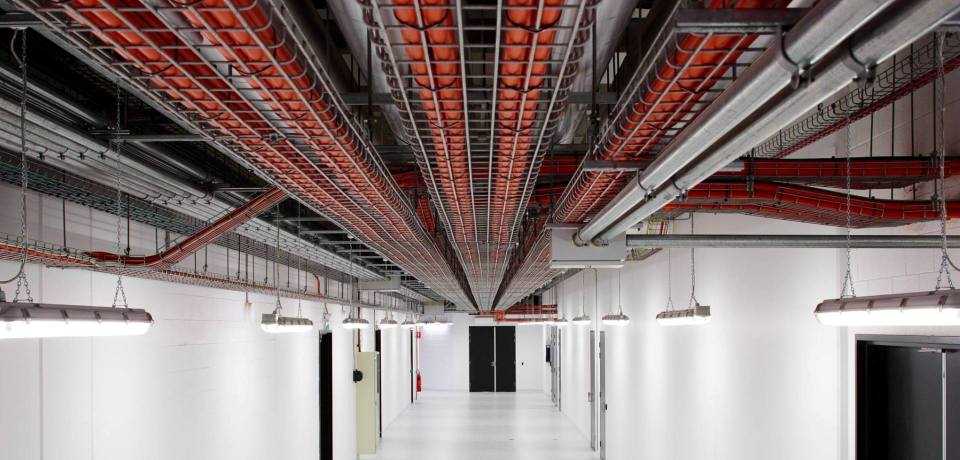Plenum Cable: Debunking the Myths
It’s time to set the record straight about several commonly held, but incorrect, beliefs about plenum-rated cable. These misconceptions get in the way of most discussions about LAN cabling but are especially bothersome in relation to UTP.
Myth #1: Any false or drop-ceiling area or space beneath a raised floor is a plenum, and I must use plenum-rated cables there
Not true. Although many people call all such spaces the plenum, they aren’t necessarily. A plenum has a very specific definition. It is a duct, raceway, or air space that is part of the HVAC air-handling system. Sometimes, or even often, the drop-ceiling or raised-floor spaces are used as return air passageways in commercial buildings, but not always.
Your building-maintenance folks should know for sure, as will the company that installed the HVAC. If it isn’t a plenum space, then you don’t have to spend the extra for plenum-rated cable.
Myth #2: There are plenum cables and PVC cables
The wording here is nothing but sloppy use of terminology, but it results in the widespread notion that plenum cables don’t use PVC in their construction and that non-plenum cables are all PVC. In fact, virtually all four-pair UTP cables in the United States use a PVC jacket, plenum cables included. And guess what?
Virtually none of the Category 5 or better cables on the market use any PVC as an insulation material for the conductors, no matter what the flame rating. So a plenum-rated cable actually has just as much PVC in it as does a so-called PVC non-plenum cable.
Unless you have to be specific about one of the lesser flame ratings, you are more accurate when you generalize about cable flame ratings if you say plenum and non-plenum instead of plenum and PVC.
Myth #3: Plenum cables don’t produce toxic or corrosive gases when they burn
In Europe and in the United States (regarding specialized installations), much emphasis is placed on “clean” smoke. Many tests, therefore, measure the levels of toxic or corrosive elements in the smoke. But for general commercial and residential use, the U.S. philosophy toward fire safety as it relates to cables is based on two fundamentals. First, give people time to evacuate a building and, second, don’t obscure exits and signs that direct people to exits.
NEC flame-test requirements relate to tests that measure resistance to spreading a fire, to varying degrees and under varying conditions based on intended use of the cable. The requirements satisfy part one of the philosophy—it delays the spread of the fire.
Because all but plenum cables are intended for installation behind walls or in areas inaccessible to the public, the second part doesn’t apply. However, because a plenum cable is installed in an air-handling space where smoke from the burning cable could spread via HVAC fans to the populated part of the building, the plenum test measures the generation of visible smoke.
Visible smoke can keep people from recognizing exits or suffocate them (which actually happened in some major hotel fires before plenum cables were defined in the code).
Myth #4: I should buy plenum cable if I want good transmission performance
If you’ve got money to burn, believe this. Although FEP (fluorinated ethylene-propylene, the conductor insulation material used in plenum-rated Category 5 and higher cables) has excellent transmission properties, its use in plenum cables is due more to its equally superb resistance to flame propagation and relatively low level of visible-smoke generation. In Category 5 and higher non-plenum cables, HDPE (high-density polyethylene) is commonly used as conductor insulation.
It has almost as good transmission properties as FEP and has the added benefit of being several times lower in cost than FEP (and thus explains the primary difference in price between plenum and non-plenum UTP cables).
HDPE does, however, burn like a candle and generate copious visible smoke. Cable manufacturers can adjust the PVC jacket of a four-pair construction to allow an HDPE-insulated cable to pass all flame tests except the plenum test.
They also compensate for differences in transmission properties between FEP and HDPE (or whatever materials they select) by altering the dimensions of the insulated conductor. End result: No matter what the flame rating, if the cable jacket says Category 5 or better, you get Category 5 or better.
Myth #5: To really protect my family, I should specify plenum cable be installed in my home
The lack of logic and understanding here stuns us. First, communication cables are almost never the source of ignition or flame spread in a residential fire. It’s not impossible, but it’s extremely rare. Secondly, to what should the “fireproof” cable be attached?
It is going to be fastened to wooden studs, most likely—wooden studs that burn fast, hot, and with much black, poisonous smoke. While the studs are burning, the flooring, roofing, electrical wiring, plastic water pipes, carpets, curtains, furniture, cabinets, and woodwork are also blazing away merrily, also generating much smoke.
A plenum cable’s potential to mitigate such a conflagration is essentially nil. Install a CMX-rated cable, and you’ll comply with the National Electric Code. Install CM, CMG, or CMR, and you’ll be exceeding NEC requirements. Leave the CMP cable to the commercial environments for which it’s intended and don’t worry about needing it at home.


